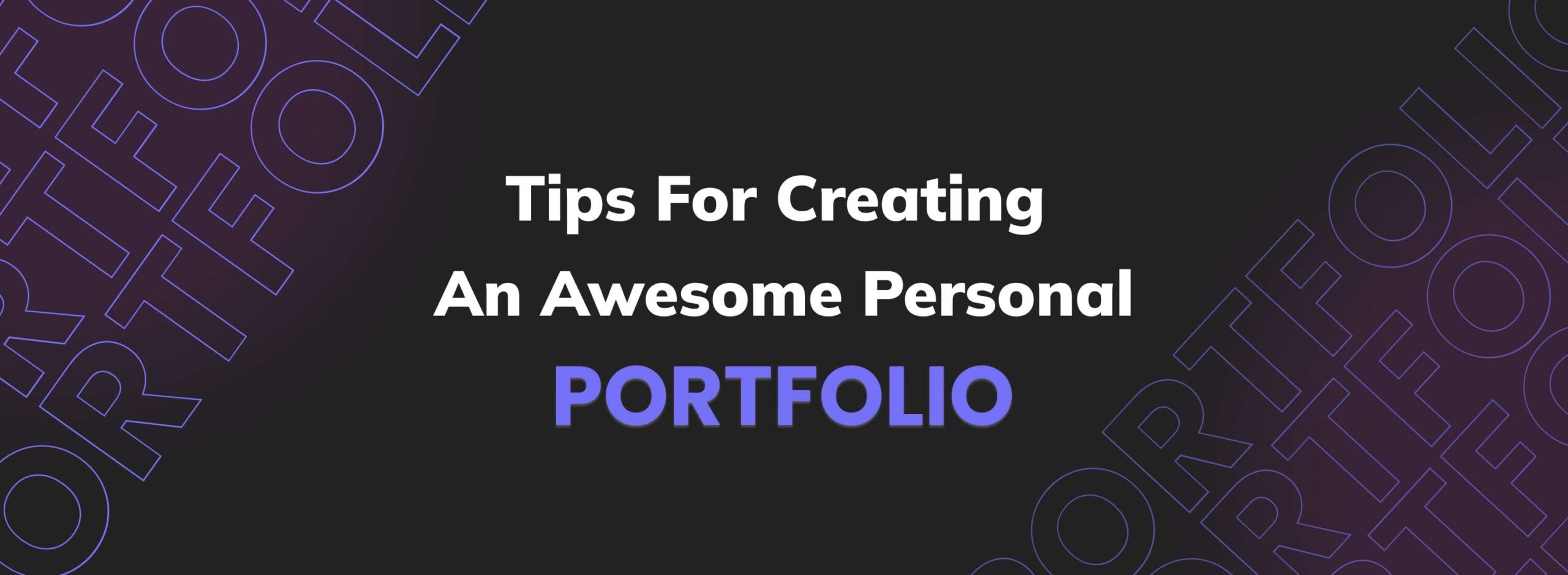Creating a personal portfolio is essential for anyone looking to showcase their skills, experience, and accomplishments clearly and concisely. Whether you are a freelancer, an artist, or a professional in any other field, building a personal portfolio that accurately reflects your work is crucial in today’s digital age.
In this blog article, we will discuss tips for creating an awesome personal portfolio to help you stand out and showcase your talent to the world. From defining your goals and target audience to choosing the right platform to make it visually appealing and easily searchable, we will cover all the important aspects of creating personal portfolio websites that are both effective and memorable. Whether you are just starting or looking to revamp your existing portfolio, this article has everything you need to get started.
Tips For Building a Personal Portfolio
Here are some tips for building personal portfolio websites:
- Define your goals and target audience
Defining your goals and target audience is the first step in creating an effective personal portfolio. Before you start putting together your content, it is important to clearly understand what you want to showcase and who you want to showcase it to. This will help you make informed decisions about the type of content you include, the platform you use, and your portfolio’s overall design and aesthetic.
Consider who you want to reach with your portfolio and what they are looking for in a portfolio. For example, if you are a freelance graphic designer, your target audience might be potential clients who are interested in hiring you for their next project. In this case, your portfolio should showcase your design skills and include examples of past projects that demonstrate your expertise.
- Choose a platform to host your portfolio
Choosing the right platform to host your personal portfolio is an important decision that can impact the effectiveness and success of your online presence. With so many options available, it is essential to consider factors such as customization options, cost, and ease of use when making your choice.
There are many platforms to choose from when it comes to hosting a personal portfolio. Some of the most popular include:
- Wix
- Squarespace
- WordPress
- Behance
- Cargo Collective
- Format
Each platform offers its own unique features, benefits, and limitations. For example, Wix and Squarespace are user-friendly options that are ideal for those who want a simple and easy-to-use platform, while WordPress is a more robust and customizable option that is ideal for those with more technical skills.
When choosing platforms for personal portfolio websites, it is important to consider factors such as customization options, cost, and ease of use. For example, if you want a lot of control over the design and functionality of your portfolio, a platform like WordPress might be a better option than a simpler platform like Wix. Similarly, if you are on a tight budget, you might want to consider a free platform like Behance or Cargo Collective. At the same time, if you are willing to invest more in your portfolio, a paid platform like Squarespace or Format might be a better option.
- Make it visually appealing
Making your portfolio visually appealing is essential to engaging your target audience and making a positive impression. A portfolio with a clean, simple, modern design that is easy to navigate and filled with high-quality images and videos can help you stand out and demonstrate your skills and expertise memorably. Here are two ways to make your portfolio visually appealing:
- Use clean, simple, and modern design
When it comes to the design of your portfolio, a clean, simple, and modern aesthetic is usually the most effective. A simple design that is easy to navigate and focuses on your content can help your audience stay engaged and focused on your work. When choosing a design, consider using a minimalist color palette, clear typography, and plenty of white space to create a clean and modern look.
- Choose high-quality images and videos
Another key element of a visually appealing personal portfolio is high-quality images and videos. Whether you are showcasing your latest projects or highlighting your skills and experience, using high-quality images and videos can help you communicate your message more effectively. When selecting images and videos, consider their resolution, lighting, and overall quality to ensure they look great and accurately showcase your work.
- Optimize for search engines
Optimizing your portfolio for search engines is an important aspect of making it more discoverable online. By using keywords relevant to your field, ensuring the portfolio is easily crawlable by search engines, and including meta descriptions, tags, and alt tags, you can improve your portfolio’s visibility and help your target audience find you more easily. Here are three ways to optimize your portfolio for search engines:
- Use keywords relevant to your field
One of the most important steps in optimizing your portfolio for search engines is to use keywords relevant to your field. Keywords are the words or phrases people enter into search engines when looking for information online. By incorporating keywords relevant to your field into your portfolio, you can improve its visibility and help it rank higher in search engine results pages (SERPs).
- Ensure the portfolio is easily crawl-able by search engines
Another important aspect of optimizing your portfolio for search engines is to ensure that it is easily crawl-able by search engines. Crawling refers to the process by which search engines discover and index the content on your portfolio. To ensure that your portfolio is easily crawl-able, you should make sure that it’s structured in a way that is easy for search engines to understand and that it’s accessible to search engines.
- Include meta descriptions, tags, and alt tags
Finally, it’s important to include meta descriptions, tags, and alt tags to optimize your portfolio for search engines. Meta descriptions provide a brief summary of your portfolio and are displayed in the SERPs. Alt tags describe the content of images and videos and are used by search engines to understand what the images and videos on your portfolio are about. By including meta descriptions, tags, and alt tags, you can help search engines understand the content on your portfolio and improve its visibility in the SERPs.
- Create a strong online presence
Having a strong online presence is crucial for showcasing your personal portfolio to the world and reaching a wider audience. By connecting with potential employers and collaborators through social media, utilizing networking opportunities to promote your portfolio, and engaging with your audience through a blog or newsletter, you can build a strong online presence and attract more attention to your work.
Social media is a powerful tool for connecting with potential employers and collaborators and for promoting your portfolio. By creating profiles on popular social media platforms such as LinkedIn, Twitter, and Instagram, you can showcase your work to a wider audience and engage with potential employers and collaborators. You can also use social media to promote your portfolio and connect with others in your field.
Conclusion
In conclusion, creating an awesome personal portfolio can be a challenging but rewarding experience. By following the tips discussed in this article, you can showcase your work and skills in a way that is visually appealing, relevant to your goals and target audience, and optimized for search engines. In addition to following the tips outlined in this article, it is important to keep your portfolio up-to-date with your latest projects and to refine it as your skills and experiences grow. Are you searching for professional freelance web developers to help you build personal portfolio websites? Our website hosts some of the industry’s best software developers, website designers, and UI/UX designers. Check it out now.







